Live From Baghdad
Documentary films
Watch at least four of these films before Dec. 7.
“The War Behind Closed Doors”
“The Storm”
“Bush’s War”
“Inside the Meltdown”
“The Rise of ISIS”
“Divided States of America”
“Thirteen Days”
Here’s the trailer to the film about the Cuban Missile Crisis that I mentioned in class.
The trailer is cheesier than the film, which is quite good.
Welcome to OrtizHistory
Welcome to OrtizHistory, a blog for my history students.
Throughout the semester, you’ll find a wide array of historical links, videos, articles, podcasts, and other items that are meant to supplement — directly or indirectly — your assignments, discussions, and overall explorations of U.S. history. I hope we all find the content interesting, if not useful and valuable to our academic work. I welcome your suggestions and contributions.
As I emphasized in every syllabus, this blog is purely a personal endeavor and is not part of my official responsibilities at San Antonio College, Northwest Vista College, the University of Texas at San Antonio, or Texas A&M University-San Antonio. No student is obligated to participate or even read this blog, and no grades will be affected by a student’s contribution to this blog. It is purely an optional entity co-existing with our classes.
Sincerely,
Fernando Ortiz Jr.
A U.S. president wonders why there was a U.S. civil war

Good example of the DA
Frequently asked questions
Students have sent me a few questions, and I’ve gathered them into a FAQ:
1. Do you have a study guide or do you offer copies of your lecture notes?
No one has asked me for study guides before, so I haven’t prepared anything like that, but I’m happy to prepare some kind of guide if you think it will help you succeed in the class. I prefer not to share my lecture notes, but I’m happy to prepare a variety of guides that can help different students with different learning styles.
For those of you who want some kind of study guide, send me some ideas or examples of what works for you (an outline, a list of keywords, a little narrative history, examples of what other teachers have done, etc.). I’m sure I can accommodate you. Write to me individually and privately and let me know what you need.
I’ve always wanted to create my own timeline of events — perhaps that will help some students make sense of everything that happens and keep it all organized in their minds.
2. May I use an editorial cartoon or a photo for my Current Events Analysis assignment?
If you feel the photo or illustration clearly shows or explains the story you want to analyze, then yes, that is fine, as long as you don’t use photos/illustrations every week.
3. I’m not sure how you want me to write the Current Events Analysis assignments.
No problem. Here’s an example: https://ortizhistory.wordpress.com/2017/01/13/good-example-of-a-cea.
Just click on the image to make it bigger.
4. May I submit more than two assignments per week?
You may submit two Current Events Analysis assignments per week, but no more than that. Ideally, space them out over the semester so you stay connected with news events and practice your historical analyses of those events.
5. I’m not sure how you want me to write the Internet Research Review.
No problem. Here’s an example: https://ortizhistory.wordpress.com/2017/01/14/good-example-of-the-irr.
Just click on the image to make it bigger.
6. Do you have an example of the biographical essay that I can follow?
Yes. I wrote my own biographical essay on Theodore Roosevelt as an example.
Check it out here: https://ortizhistory.wordpress.com/2016/02/28/example-of-the-bio-essay
Just click on the image to make it bigger. You’ll see the two-page essay, then the bibliography, and then you’ll see how I broke down the essay into color-coded sections — each section answering the questions I asked in the assignment. I’m happy to explain it step-by-step in private to you. Just let me know.
7. May I work on my biographical essay project with a partner?
Yes. Sometimes, it’s much easier that way, even though you’re writing about different people. Go to the library together. Research together. Read and edit each other’s writing. Give each other ideas. Push each other to do better. You can do that together too.
8. How soon may I submit extra credit assignments, like a photo of me at the San Antonio Missions?
You may submit them as soon as you wish. Some students in past semesters submitted the EC assignments really early in the semester just to boost their total points before I submitted the midterm grades. Check the syllabus for the deadline to submit extra credit assignments. There’s always a rush at the end of every semester.
9. If I have a question late at night, may I ask you the question, or should I wait until class?
Always feel free to ask me questions whenever you need the answers, even if it is late at night. I will probably be up late working too, so most of the time I’ll get back to you right away. I see every email sent to me, so eventually, I will get back to you with an answer or clarification. I’m always available to you. Use my official email listed in the syllabus.
10. How do you get your forehead so shiny?
There are some questions that don’t need answers.
Good example of the IRR

Good example of a CEA
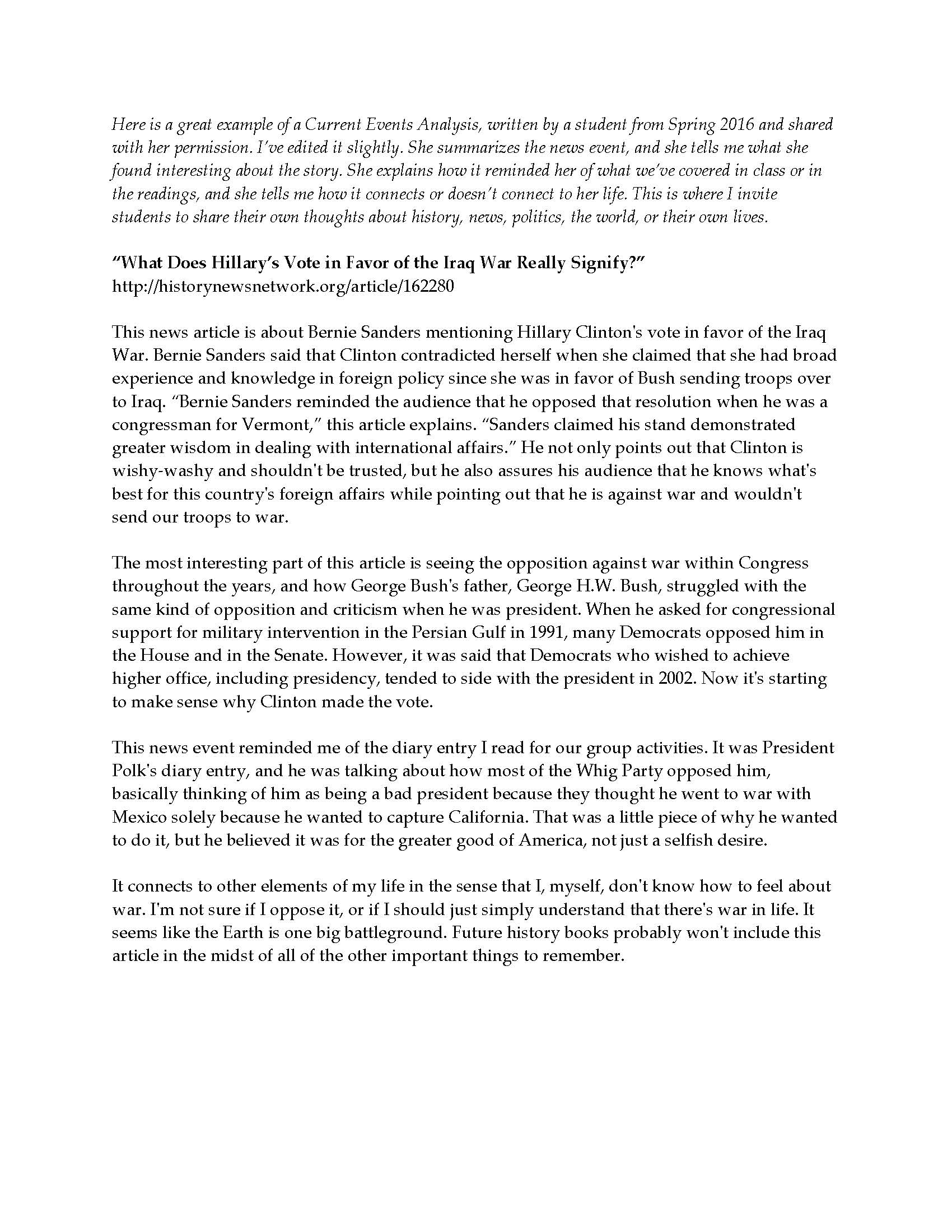
Good example of CEA
LBJ
Eleanor Roosevelt helps Marian Anderson
Professor George B. Forgie recommends books on Civil War and Reconstruction
Primary source: W.E.B Du Bois Celebrates Black Legislators
W.E.B Du Bois Celebrates Black Legislators
Excerpted from the 1910 article “Reconstruction and Its Benefits”1
The leading civil rights activist in the U.S. defends the accomplishments of black legislators, celebrates the new state constitutions they authored as beneficial to both black and white Southerners, and points to an array of far-sighted legislative measures that set the South on the road to modernity.
Undoubtedly there were many ridiculous things connected with Reconstruction governments: the placing of ignorant field-hands who could neither read nor write in the legislature, the gold spittoons of South Carolina, the enormous public printing bill of Mississippi — all these were extravagant and funny, and yet somehow, to one who sees beneath all that is bizarre, the real human tragedy of the upward striving of down-trodden men, the groping for light among people born in darkness, there is less tendency to laugh and gibe than among shallower minds and easier consciences. All that is funny is not bad.
Then, too, a careful examination of the alleged stealing in the South reveals much. … The character of the real thieving shows that white men must have been the chief beneficiaries. … The frauds through the manipulation of state and railway bonds and of bank-notes must have inured chiefly to the benefit of experienced white men, and this must have been largely the case in the furnishing and printing frauds. … That the negroes, led by astute thieves, became tools and received a small share of the spoils is true. But … much of the legislation which resulted in fraud was represented to the negroes as good legislation, and thus their votes were secured by deliberate misrepresentation. …
Granted then that the negroes were to some extent venal but to a much larger extent ignorant and deceived, the question is: did they show any signs of a disposition to learn better things? The theory of democratic government is not that the will of the people is always right, but rather that normal human beings of average intelligence will, if given a chance, learn the right and best course by bitter experience. This is precisely what the negro voters showed indubitable signs of doing. First, they strove for schools to abolish ignorance, and, second, a large and growing number of them revolted against the carnival of extravagance and stealing that marred the beginning of Reconstruction, and joined with the best elements to institute reform; and the greatest stigma on the white South is not that it opposed negro suffrage and resented theft and incompetence, but that when it saw the reform movement growing and even in some cases triumphing, and a larger and larger number of black voters learning to vote for honesty and ability, it still preferred a Reign of Terror to a campaign of education, and disfranchised negroes instead of punishing rascals. …
We may recognize three things which negro rule gave to the South:
1. Democratic government. 2. Free public schools. 3. New social legislation.
Two states will illustrate conditions of government in the South before and after negro rule. In South Carolina there was before the war a property qualification for office-holders, and, in part, for voters. The Constitution of 1868, on the other hand, was a modern democratic document starting … with a declaration that “We, the People,” framed it, and preceded by a broad Declaration of Rights which did away with property qualifications and based representation directly on population instead of property. It especially took up new subjects of social legislation, declaring navigable rivers free public highways, instituting homestead exemptions, establishing boards of county commissioners, providing for a new penal code of laws, establishing universal manhood suffrage “without distinction of race or color,” devoting six sections to charitable and penal institutions and six to corporations, providing separate property for married women, etc. Above all, eleven sections of the Tenth Article were devoted to the establishment of a complete public-school system. …
In Mississippi, the Constitution of 1868 was, as compared with that before the war, more democratic. It not only forbade distinctions on account of color but abolished all property qualifications for jury service, and property and educational qualifications for suffrage; it required less rigorous qualifications for office. … It increased the powers of the governor, raised the low state salaries, and increased the number of state officials. New ideas like the public-school system and the immigration bureau were introduced and in general the activity of the state greatly and necessarily enlarged. … They instituted a public school system in a realm where public schools had been unknown. They opened the ballot box and jury box to thousands of white men who had been debarred from them by a lack of earthly possessions. They introduced home rule into the South. They abolished the whipping post, the branding iron, the stocks and other barbarous forms of punishment which had up to that time prevailed. …
This democracy brought forward new leaders and men and definitely overthrew the old Southern aristocracy. Among these new men were negroes of worth and ability. … There is no doubt but that the thirst of the black man for knowledge — a thirst which has been too persistent and durable to be mere curiosity or whim — gave birth to the public free-school system of the South. It was the question upon which black voters and legislators insisted more than anything else and while it is possible to find some vestiges of free schools in some of the Southern States before the war yet a universal, well-established system dates from the day that the black man got political power. Common-school instruction in the South, in the modern sense of the term, was begun for negroes by the Freedmen’s Bureau and missionary societies, and the state public-school systems for all children were formed mainly by negro Reconstruction governments. …
We are apt to forget that in all human probability the granting of negro manhood suffrage and the passage of the Fifteenth Amendment were decisive in rendering permanent the foundation of the negro common school. Even after the overthrow of the negro governments, if the negroes had been left a servile caste, personally free, but politically powerless, it is not reasonable to think that a system of common schools would have been provided for them by the Southern States. Serfdom and education have ever proven contradictory terms.
But when Congress, backed by the nation, determined to make the negroes full-fledged voting citizens, the South had a hard dilemma before her: either to keep the negroes under as an ignorant proletariat and stand the chance of being ruled eventually from the slums and jails, or to join in helping to raise these wards of the nation to a position of intelligence and thrift by means of a public-school system. The “carpet-bag” governments hastened the decision of the South, and although there was a period of hesitation and retrogression after the overthrow of negro rule in the early seventies, yet the South saw that to abolish negro schools in addition to nullifying the negro vote would invite Northern interference; and thus eventually every Southern state confirmed the work of the negro legislators and maintained the negro public schools along with the white. Finally, in legislation covering property, the wider functions of the state, the punishment of crime and the like, it is sufficient to say that the laws on these points established by Reconstruction legislatures were not only different from and even revolutionary to the laws in the older South, but they were so wise and so well suited to the needs of the new South that in spite of a retrogressive movement following the overthrow of the negro governments the mass of this legislation … still stands on the statute books of the South.
Even in the case of states like Alabama, Georgia, North Carolina, and Louisiana, which adopted new constitutions to signify the overthrow of negro rule, the new constitutions are nearer the model of the Reconstruction document than they are to the previous constitutions. They differ from the negro constitutions in minor details but very little in general conception.
Besides this there stands on the statute books of the South today law after law passed between 1868 and 1876, and which has been found wise, effective, and worthy of preservation.
Paint the “carpet-bag” governments and negro rule as black as may be, the fact remains that the essence of the revolution which the overturning of the negro governments made was to put these black men and their friends out of power. Outside the curtailing of expenses and stopping of extravagance, not only did their successors make few changes in the work which these legislatures and conventions had done, but they largely carried out their plans, followed their suggestions, and strengthened their institutions.
Practically the whole new growth of the South has been accomplished under laws which black men helped to frame thirty years ago. I know of no greater compliment to negro suffrage.
Primary source: U.S. Supreme Court Declares that Separate is Equal
The U.S. Supreme Court Declares that Separate is Equal
Excerpt from the 1896 court decision “Plessy v. Ferguson”1
In 1890, Louisiana required railroad companies in the state to establish “equal but separate accommodations for the white and colored races.” They could also keep blacks from entering rooms or railcars reserved for whites. When Homer Plessy, a man whose great-grandmother was black, making him one-eighth black, challenged the law by sitting in a whites-only railcar, he was arrested and convicted of breaking the law. A team of black lawyers, educators, and journalists used his appeal to fight this segregation policy, and they took the case to the U.S. Supreme Court. The court ruled 7-1 to uphold the statute, and the case became a precedent other states quickly emulated.
This was a petition for writs of prohibition and certiorari originally filed in the supreme court of the state by [Homer] Plessy, the plaintiff in error, against the Hon. John H. Ferguson, judge of the criminal district court for the parish of Orleans, and setting forth, in substance, the following facts:
That petitioner was a citizen of the United States and a resident of the state of Louisiana, of mixed descent, in the proportion of seven-eighths Caucasian and one-eighth African blood;
That the mixture of colored blood was not discernible in him …
That he was entitled to every recognition, right, privilege, and immunity secured to the citizens of the United States of the white race by its constitution and laws;
That on June 7, 1892, he engaged and paid for a first-class passage on the East Louisiana Railway, from New Orleans to Covington, in the same state, and thereupon entered a passenger train, and took possession of a vacant seat in a coach where passengers of the white race were accommodated …
[That the] petitioner was required by the conductor, under penalty of ejection from said train and imprisonment, to vacate said coach, and occupy another seat, in a coach assigned by said company for persons not of the white race, and for no other reason than that petitioner was of the colored race;
That, upon petitioner’s refusal to comply with such order, he was, with the aid of a police officer, forcibly ejected from said coach, and hurried off to, and imprisoned in, the parish jail of New Orleans, and there held to answer a charge made by such officer to the effect that he was guilty of having criminally violated an act of the general assembly of the state, approved July 10, 1890. …
This case turns upon the constitutionality of an act of the general assembly of the state of Louisiana, passed in 1890, providing for separate railway carriages for the white and colored races. … The constitutionality of this act is attacked upon the ground that it conflicts both with the thirteenth amendment of the constitution, abolishing slavery, and the fourteenth amendment, which prohibits certain restrictive legislation on the part of the states.
That it does not conflict with the thirteenth amendment, which abolished slavery and involuntary servitude, except a punishment for crime, is too clear for argument. … By the fourteenth amendment, all persons born or naturalized in the United States … are made citizens of the United States and of the state wherein they reside; and the states are forbidden from making or enforcing any law which shall abridge the privileges or immunities of citizens of the United States, or shall deprive any person of life, liberty, or property without due process of law, or deny to any person within their jurisdiction the equal protection of the laws. …
The object of the [fourteenth] amendment was undoubtedly to enforce the absolute equality of the two races before the law, but, in the nature of things, it could not have been intended to abolish distinctions based upon color, or to enforce social, as distinguished from political, equality, or a commingling of the two races upon terms unsatisfactory to either. Laws permitting, and even requiring, their separation, in places where they are liable to be brought into contact, do not necessarily imply the inferiority of either race to the other, and have been generally, if not universally, recognized as within the competency of the state legislatures in the exercise of their police power. …
So far, then, as a conflict with the fourteenth amendment is concerned, the case reduces itself to the question whether the statute of Louisiana is a reasonable regulation, and with respect to this there must necessarily be a large discretion on the part of the legislature. In determining the question of reasonableness, [the legislature] is at liberty to act with reference to the established usages, customs, and traditions of the people, and with a view to the promotion of their comfort, and the preservation of the public peace and good order. …
We consider the underlying fallacy of the plaintiff’s argument to consist in the assumption that the enforced separation of the two races stamps the colored race with a badge of inferiority. If this be so, it is not by reason of anything found in the act, but solely because the colored race chooses to put that construction upon it. The argument necessarily assumes that if … the colored race should become the dominant power in the state legislature, and should enact a law in precisely similar terms, it would thereby relegate the white race to an inferior position. We imagine that the white race, at least, would not acquiesce in this assumption.
The argument also assumes that social prejudices may be overcome by legislation, and that equal rights cannot be secured to the negro except by an enforced commingling of the two races. We cannot accept this proposition. If the two races are to meet upon terms of social equality, it must be the result of natural affinities, a mutual appreciation of each other’s merits, and a voluntary consent of individuals. … Legislation is powerless to eradicate racial instincts, or to abolish distinctions based upon physical differences, and the attempt to do so can only result in accentuating the difficulties of the present situation. If the civil and political rights of both races be equal, one cannot be inferior to the other civilly or politically. If one race be inferior to the other socially, the constitution of the United States cannot put them upon the same plane. …
Primary source: Southern black leaders ask for help
Southern black leaders ask for help
Excerpted from Proceedings of the Convention of the Colored People of Virginia, August 2-5, 18651
As the reverberations of civil war subsided and Southern communities began rebuilding, black leaders met in conventions to consider how to best participate as citizens and voters in the postwar American democracy, despite the fact that hostile Southerners surrounded them in all directions. From those conventions black leaders sent warnings and pleas for help to the Radical Republicans in Washington D.C. This an excerpt from one of those messages, from an 1865 convention held in Alexandria, Virginia.
We, the undersigned members of a Convention of colored citizens of the State of Virginia, would respectfully represent that, although we have been held as slaves, and denied all recognition as a constituent of your nationality for almost the entire period of the duration of your Government, and that by your permission we have been denied either home or country, and deprived of the dearest rights of human nature; yet when you and our immediate oppressors met in deadly conflict upon the field of battle — the one to destroy and the other to save your Government and nationality, we, with scare an exception, in our inmost souls espoused your cause, and watched, and prayed, and waited, and labored for your success. …
When the contest waxed long, and the result hung doubtfully, you appealed to us for help, and how well we answered is written in the rosters of the two hundred thousand colored troops now enrolled in your service; and as to our undying devotion to your cause, let the uniform acclamation of escaped prisoners, “whenever we saw a black face we felt sure of a friend,” answer.
Well, the war is over, the rebellion is “put down,” and we are declared free! Four fifths of our enemies are paroled or amnestied, and the other fifth are being pardoned, and the President has, in his efforts at the reconstruction of the civil governments of the States, late in rebellion, left us entirely at the mercy of these subjugated but unconverted rebels, in everything save the privilege of bringing us our wives and little ones, to the auction block. … We know these men — know them well — we assure you that, with the majority of them, loyalty is only “lip deep,” and that their professions of loyalty are used as a cover to the cherished design of getting restored to their former relations with the Federal Government, and then, by all sorts of “unfriendly legislation,” to render the freedom you have given us more intolerable than the slavery they intended for us.
We warn you in time that our only safety is in keeping them under Governors of the military persuasion until you have so amended the Federal Constitution that it will prohibit the States from making any distinction between citizens on account of race or color. In one word, the only salvation for us besides the powder of the Government, is in the possession of the ballot. Give us this, and we will protect ourselves. … But, ’tis said we are ignorant. Admit it. Yet who denies we know a traitor from a loyal man, a gentleman from a rowdy, a friend from an enemy? … All we ask is an equal chance with the white traitors varnished and japanned2 with the oath of amnesty. Can you deny us this and still keep faith with us? …
We are “sheep in the midst of wolves,” and nothing but the military arm of the Government prevents us and all the truly loyal white men from being driven from the land of our birth. Do not, then, we beseech you, give to one of these “wayward sisters” the rights they abandoned and forfeited when they rebelled until you have secured our rights by the aforementioned amendment to the Constitution. …
Primary source: Former slaves react to emancipation
Former slaves react to emancipation
By Booker T. Washington
Excerpted from Up From Slavery: An Autobiography1
The famed civil rights leader was an eight-year-old slave in Virginia when emancipation was announced. In this excerpt from his 1901 memoir, he illustrates a wide range of emotions and reactions from the both the former slaves and the former slaveholders.
Finally the war closed, and the day of freedom came. It was a momentous and eventful day to all upon our plantation. We had been expecting it. Freedom was in the air, and had been for months. Deserting soldiers returning to their homes were to be seen every day. Others who had been discharged, or whose regiments had been paroled, were constantly passing near our place. The “grape-vine telegraph” was kept busy night and day. The news and mutterings of great events were swiftly carried from one plantation to another. In the fear of “Yankee” invasions, the silverware and other valuables were taken from the “big house,” buried in the woods, and guarded by trusted slaves. Woe be to anyone who would have attempted to disturb the buried treasure. The slaves would give the Yankee soldiers food, drink, clothing — anything but that which had been specifically intrusted to their care and honour.
As the great day drew nearer, there was more singing in the slave quarters than usual. It was bolder, had more ring, and lasted later into the night. Most of the verses of the plantation songs had some reference to freedom. True, they had sung those same verses before, but they had been careful to explain that the “freedom” in these songs referred to the next world, and had no connection with life in this world. Now they gradually threw off the mask, and were not afraid to let it be known that the “freedom” in their songs meant freedom of the body in this world. The night before the eventful day, word was sent to the slave quarters to the effect that something unusual was going to take place at the “big house” the next morning. There was little, if any, sleep that night. All was excitement and expectancy.
Early the next morning word was sent to all the slaves, old and young, to gather at the house. In company with my mother, brother, and sister, and a large number of other slaves, I went to the master’s house. All of our master’s family were either standing or seated on the veranda of the house, where they could see what was to take place and hear what was said. There was a feeling of deep interest, or perhaps sadness, on their faces, but not bitterness. As I now recall the impression they made upon me, they did not at the moment seem to be sad because of the loss of property, but rather because of parting with those whom they had reared and who were in many ways very close to them.
The most distinct thing that I now recall in connection with the scene was that some man who seemed to be a stranger (a United States officer, I presume) made a little speech and then read a rather long paper — the Emancipation Proclamation, I think. After the reading we were told that we were all free, and could go when and where we pleased. My mother, who was standing by my side, leaned over and kissed her children, while tears of joy ran down her cheeks. She explained to us what it all meant, that this was the day for which she had been so long praying, but fearing that she would never live to see.
For some minutes there was great rejoicing, and thanksgiving, and wild scenes of ecstasy. But there was no feeling of bitterness. In fact, there was pity among the slaves for our former owners. The wild rejoicing on the part of the emancipated coloured people lasted but for a brief period, for I noticed that by the time they returned to their cabins there was a change in their feelings. The great responsibility of being free, of having charge of themselves, of having to think and plan for themselves and their children, seemed to take possession of them. It was very much like suddenly turning a youth of ten or twelve years out into the world to provide for himself. In a few hours the great questions with which the Anglo-Saxon race had been grappling for centuries had been thrown upon these people to be solved. These were the questions of a home, a living, the rearing of children, education, citizenship, and the establishment and support of churches. Was it any wonder that within a few hours the wild rejoicing ceased and a feeling of deep gloom seemed to pervade the slave quarters? To some it seemed that, now that they were in actual possession of it, freedom was a more serious thing than they had expected to find it. Some of the slaves were seventy or eighty years old; their best days were gone. … To this class the problem seemed especially hard. Besides, deep down in their hearts there was a strange and peculiar attachment to “old Marster” and “old Missus,” and to their children, which they found it hard to think of breaking off. With these they had spent in some cases nearly a half-century, and it was no light thing to think of parting. Gradually, one by one, stealthily at first, the older slaves began to wander from the slave quarters back to the “big house” to have a whispered conversation with their former owners as to the future. …
After the coming of freedom there were two points upon which practically all the people on our place were agreed, and I find that this was generally true throughout the South: that they must change their names, and that they must leave the old plantation for at least a few days or weeks in order that they might really feel sure that they were free. In some way a feeling got among the coloured people that it was far from proper for them to bear the surname of their former owners, and a great many of them took other surnames. This was one of the first signs of freedom. When they were slaves, a coloured person was simply called “John” or “Susan.” … If “John” or “Susan” belonged to a white man by the name of “Hatcher,” sometimes he was called “John Hatcher,” or as often “Hatcher’s John.” But there was a feeling that “John Hatcher” or “Hatcher’s John” was not the proper title by which to denote a freeman; and so in many cases “John Hatcher” was changed to “John S. Lincoln” or “John S. Sherman. …”
As I have stated, most of the coloured people left the old plantation for a short while at least, so as to be sure, it seemed, that they could leave and try their freedom on to see how it felt. After they had remained away for a time, many of the older slaves, especially, returned to their old homes and made some kind of contract with their former owners by which they remained on the estate. …

Comparing Davis and Lincoln

Comparing North and South
Guide to editing marks
Research resources
When I come across online resources that may help your research efforts, I’ll add them to this short but growing list. Feel free to send me your own ideas.
1301
1. “Founders Online” is a digital project from the National Archives. It offers thousands of primary documents authored by the Founding Fathers and Mothers, including George Washington, John and Abigail Adams, Alexander Hamilton, Benjamin Franklin, and many other historical figures, and ranging from 1706 to 1836.
Online here: http://founders.archives.gov
2. Explore slavery in the Texas Republic with the Texas Slavery Project, an online endeavor from the University of Virginia. Digitized primary and secondary sources — newspaper articles, advertisements selling slaves or hunting for escaped slaves, interactive maps, slaveowners’ correspondence, government reports — all offer priceless insight into the growing slave industry and society of eastern and southeastern Texas.
Online here: http://www.texasslaveryproject.org/
1302
Coming soon …
A dating idea
Most of the best ideas for my classes come from my excellent students.
This evening, one student led me to a website I had never heard of before: OnThisDay.com.
Type in the year and you’ll get a long and fascinating list of notable events from around the world that took place in that year. The date range can be narrowed to specific days. You can also type in the names of historical people and find some notable dates from their lives. Of course, double-check the details with more credible historical sources whenever possible.
Nonetheless, it gives us a good sense of the larger world around a particular date, event, or person.
It should be quite helpful when you’re working on the Document Analysis assignments and you need to find out what else happened in the world when your source was “created.”
Example of the bio essay
Raise a glass to George and Martha
The web site devoted to Mount Vernon and George Washington is a wonderful and fascinating repository of all aspects of the first U.S. president’s life, from online exhibits of his swords to his leadership style to his relationship with his slaves. Equally interesting are the sections devoted to his wife, Martha, and her many interests, including her varied culinary interests.
One item on the Recipes page caught my eye: Martha’s rum punch.
Just in time for spring.
Martha Washington’s Rum Punch
(Serves 6-10)
Ingredients
3 oz. White Rum
3 oz. Dark Rum
3 oz. Orange Curacao
4 oz. simple syrup
4 oz. lemon juice
4 oz. fresh orange juice
3 lemons quartered
1 orange quartered
1/2 Tsp. grated nutmeg
3 cinnamon sticks (broken)
6 cloves
12 oz. boiling water
Instructions
In a container, mash the orange, lemons, cinnamon sticks, cloves, and nutmeg.
Add the syrup, lemon, and orange juices.
Pour the boiling water over the mixture in the container. Let cool for a few minutes to allow the spices to open.
When cool, add the white rum, dark rum, and orange curacao.
Strain well into a pitcher or punch bowl (to remove all of the spice marinade).
Serve over ice in goblets and decorate with wheels of lemon and orange.
Check out the other recipes on the Recipes page, including instructions for White Champagne Sangria, Raspberry Ice Cream, Apple Pie, Fairy Butter, Pancakes, Onion Pie, and Green Peas Soup. It all sounds delicious.
Ideas for news sources
These websites and news services should prove quite helpful as we look for ways to connect today’s events with past events.
Naturally, you are not limited to these sources.
I’ll gradually add to this list, and I welcome your suggestions.
1. NEWSPAPERS
History News Network
The New York Times
San Antonio Express-News
Austin American-Statesman
Houston Chronicle
The Washington Post
The Boston Globe
2. NEWS SERVICES
AP (Associated Press)
Reuters
Notimex
UPI (United Press International)
AFP (Agence France-Presse)
3. TELEVISION
Al-Jazeera English
CNN
FOX
ABC
NBC
PBS NewsHour
4. AUDIO
CBC (Canadian Broadcasting Corporation)
BBC (British Broadcasting Corporation)
NPR (National Public Radio)
PRI (Public Radio International)
Marketplace
5. MAGAZINES
The Atlantic
Politico
The Economist
The Daily Beast
New York Times Magazine
Foreign Affairs
The New Yorker
Texas Monthly
George H. W. Bush . American Experience . WGBH | PBS
I’m fascinated by the recent war of words between former president George H.W. Bush and his son, George W. Bush, and his son’s vice president, Dick Cheney, and defense secretary, Donald Rumsfeld. There’s a lot of bad blood there that tracks back to the Ford administration. We all forget how long all of these men have known each other, faced off against each other, and maneuvered around each other to shape the nation and world we live in today.
It all reminds me of a wonderful documentary on H.W. Bush from “American Experience.” I encourage everyone to watch it. Just click on the link below.
A biography of the 41st U.S. president, from his service in World War II to his days in the Oval Office. Part of the award-winning Presidents collection.
Source: George H. W. Bush . American Experience . WGBH | PBS
The controversy came to light in advance of a new biography of H.W. Bush, “Destiny and Power,” by Jon Meacham. I ordered it this morning, and I very much look forward to reading it. I’ll probably review it on my other blog.
Another documentary I can’t recommend enough is “Rumsfeld’s War” from the PBS series “Frontline.” It is essentially a brilliant political biography of Rumsfeld as he elbowed and knifed his way up through three presidencies as he sought more power for himself. It’s one of my all-time favorites.
Hedy Lamarr 101
A different take on historical understanding
One of my students from HIST 1302 introduced me to the video series “Epic Rap Battles of History.”
I asked him to send me his top five best battles. Check them out.
1. Adolf Hitler vs Darth Vader
2. Abraham Lincoln vs Chuck Norris
3. Martin Luther King Jr. vs Gandhi
4. Barack Obama vs Mitt Romney
5. Michael Jackson vs Elvis Presley
Who knows … in a few decades these videos may be seen by scholars and students as primary sources, offering future generations insight into our capacity to combine entertainment with historical understanding, much like a past generation, for example, used Donald Duck to ridicule Hitler and the Nazis.
Visit Mission Concepcion on Oct. 16
One of your extra-credit opportunities is to visit one of the San Antonio Missions (a visit to the Alamo doesn’t count). Take a picture of yourself next to a sign indicating which Mission you visited, show it to me, and you get an extra ten points towards your final grade for the semester.
I recently learned of one more reason to visit the beautiful Mission Concepcion. For just one night, on Friday, Oct. 16, 2015, at 8 p.m., an artist will project light onto the building, virtually “restoring” the Mission to its former glory.
That will be the highlight of a three-hour festival of food trucks, picnics, historical tours, music, and family-friendly activities spread throughout the mission grounds. Festivities begin at 6 p.m.
Learn more about the event on its Facebook page.
The unknown William McKinley
I’m not the only one fascinated with William McKinley.
“Don’t let them hurt him.”
‘Our manifest destiny’
“It is now time for the opposition to the Annexation of Texas to cease, all further agitation of the waters of bitterness and strife, at least in [connection] with this question. … [I]n regard to Texas, enough has now been given to party. It is time for the common duty of Patriotism to the Country to succeed; or if this claim will not be recognized, it is at least time for common sense to acquiesce with decent grace in the inevitable and the irrevocable.
“Texas is now ours. Already, before these words are written, her Convention has undoubtedly ratified the acceptance, by her Congress, of our proffered invitation into the Union; and made the requisite changes in her already republican form of constitution to adapt it to its future federal relations. Her star and her stripe may already be said to have taken their place in the glorious blazon of our common nationality; and the sweep of our eagle’s wing already includes within its circuit the wide extent of her fair and fertile land. …
Why, were other reasoning wanting, in favor of now elevating this question of the reception of Texas into the Union … it surely is to be found … in the manner in which other nations have undertaken to intrude themselves into it, between us and the proper parties to the case, in a spirit of hostile interference against us, for the avowed object of thwarting our policy and hampering our power, limiting our greatness and checking the fulfillment of our manifest destiny to overspread the continent allotted by Providence for the free development of our yearly multiplying millions. …”
— John O’Sullivan, “Annexation,” United States Magazine and Democratic Review 17, no.1 (July-August 1845): 5-10.
Read the entire article here.
Reconstruction: The Second Civil War
This is a fantastic two-part film about Reconstruction.

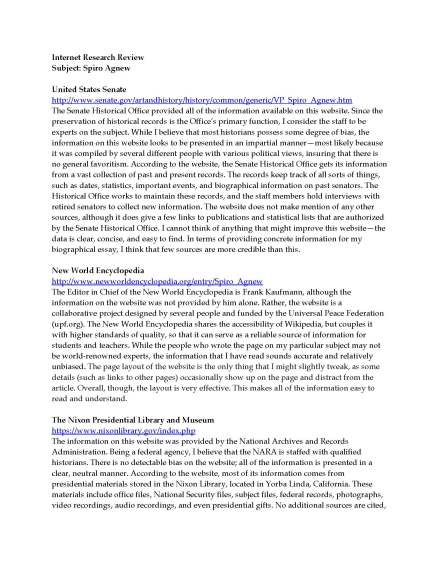
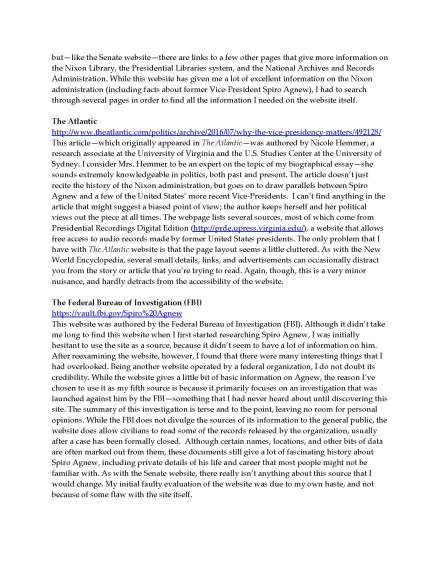
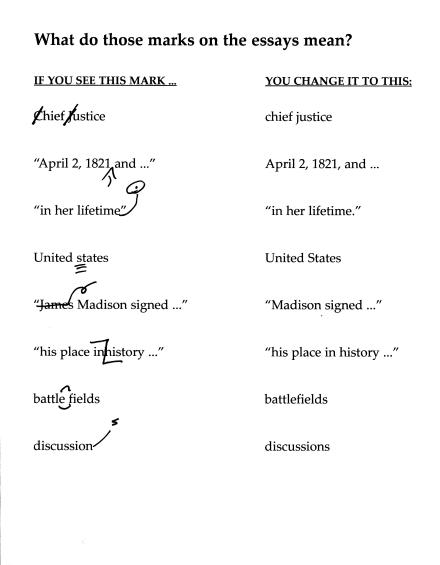
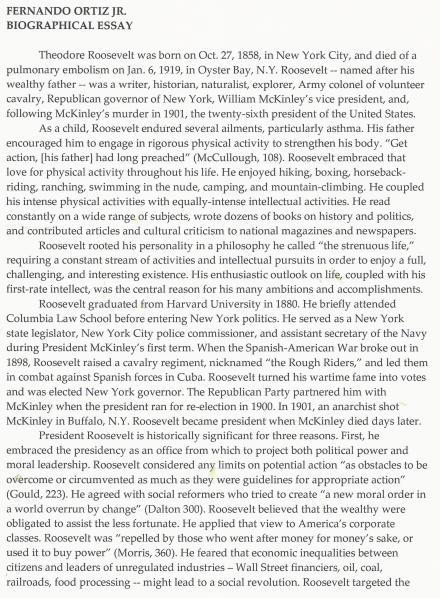
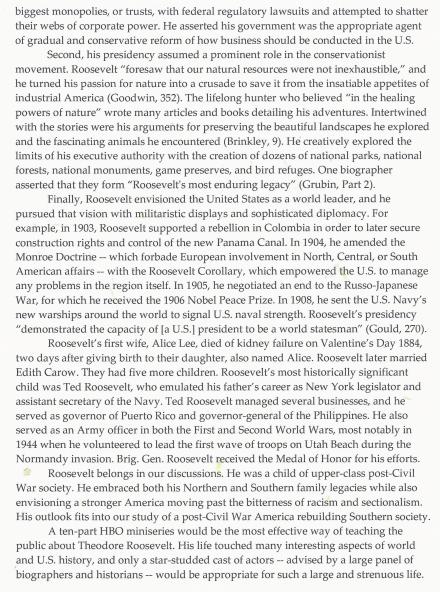
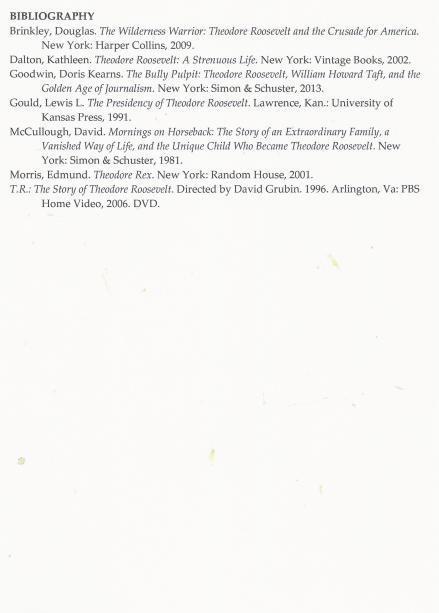

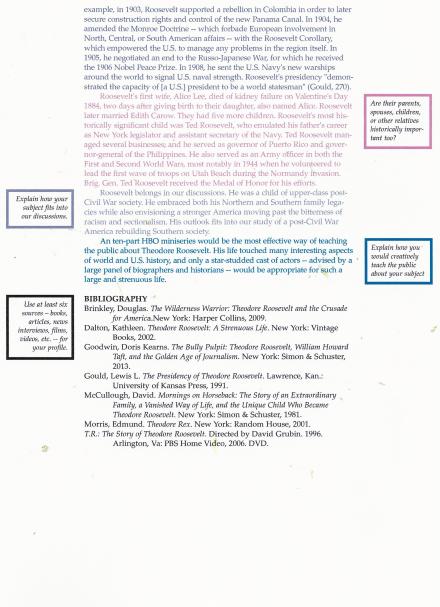


You must be logged in to post a comment.